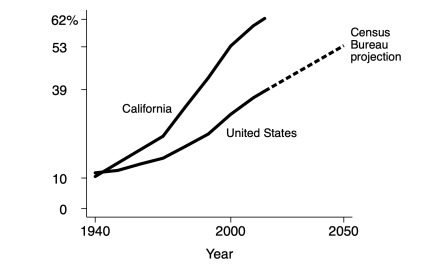The following article by Ruy Teixeira, author of The Optimistic Leftist and other works of political analysis, is cross-posted from his blog:
America the Liberal
Yes, yes, I know, Trump and all that. But facts, gentlemen and women, are stubborn things and the facts are that Americans are in a pretty liberal mood these days. How do I know?–because James Stimson’s public policy mood measure tells me so. Gregory Koger’s post on the Mischiefs of Faction site has the details:
“Stimson’s updated measure of public policy mood….revealed that Americans’ support for government action is at its highest point since the index began in 1952….
As explained in (among other places) Public Opinion In America and Tides of Consent, public policy mood combines polling responses across a wide range of policy issues to measure the American public’s collective appetite for more or less government, liberal or conservative policies. Even if we think citizens are not fully informed about stock market regulation, health care insurance, and the dozens of other specific policies pollsters ask them about, Stimson’s mood measures their underlying preference for government activism.
The mood index helps us understand previous shifts in American politics. Before 2018, the mood index peaked in the 1960s, coinciding with landmark civil rights laws, Lyndon Johnson’s Great Society social welfare policies, and the expansion of civil liberties by Supreme Court decisions. During this period there was a dramatic increase in the number of issues addressed by government actors. Public appetite for more government reached a nadir around 1980, inspiring the Republican Party to embrace a starkly conservative presidential candidate and a range of policies that would have seemed unthinkable a decade earlier.
The updated mood index shows public policy mood is at its peak. This manifests itself in public support for more government action across a range of issues: gun control, health care (e.g. a public option), college tuition, paid parental leave, minimum wage policy, etc. NPR/Marist, for example, polled on a range of Democratic proposals (plus Obamacare repeal) last month. While there are some unpopular items, Democrats have broad support for many of the policies approved by the House or advocated by Democratic presidential candidates.”
Of course, this liberal mood won’t last forever and much depends on how well Democrats play offence and how well Republicans play defense in this pro-activism period. As Koger notes:
“The history of public mood and American politics suggests the stage is set for progressive policy change after the 2020 election, but this is not guaranteed. It is not clear how well parties will take advantage (Democrats) or deflect (Republicans) public support for more active government. Nor is it clear how well our electoral system—from its campaign financing system to the small-state bias of the Senate and Electoral College—will translate public opinion into government action…If the Democrats gain unified control of the federal government in 2021, the real question is how well they use their window of opportunity to create durable policy programs and systemic political change.”
Yes, that’s the real question. The public is clearly moving in a liberal direction–but can Democrats get their act together and take maximum advantage? I’d say that’s not yet clear.




